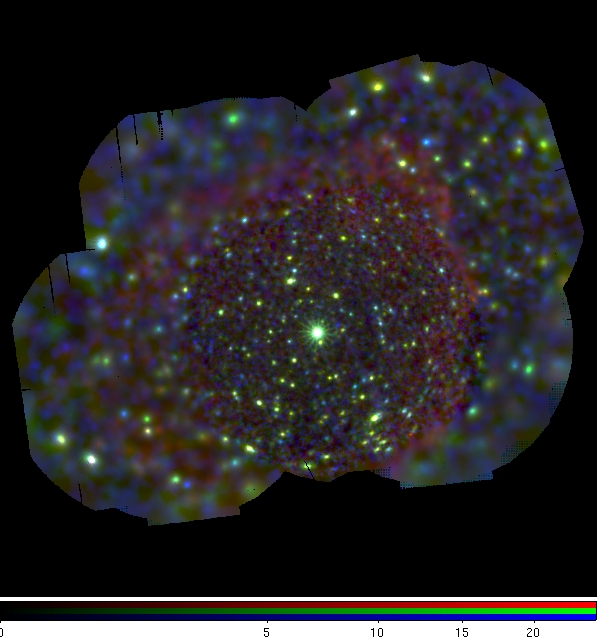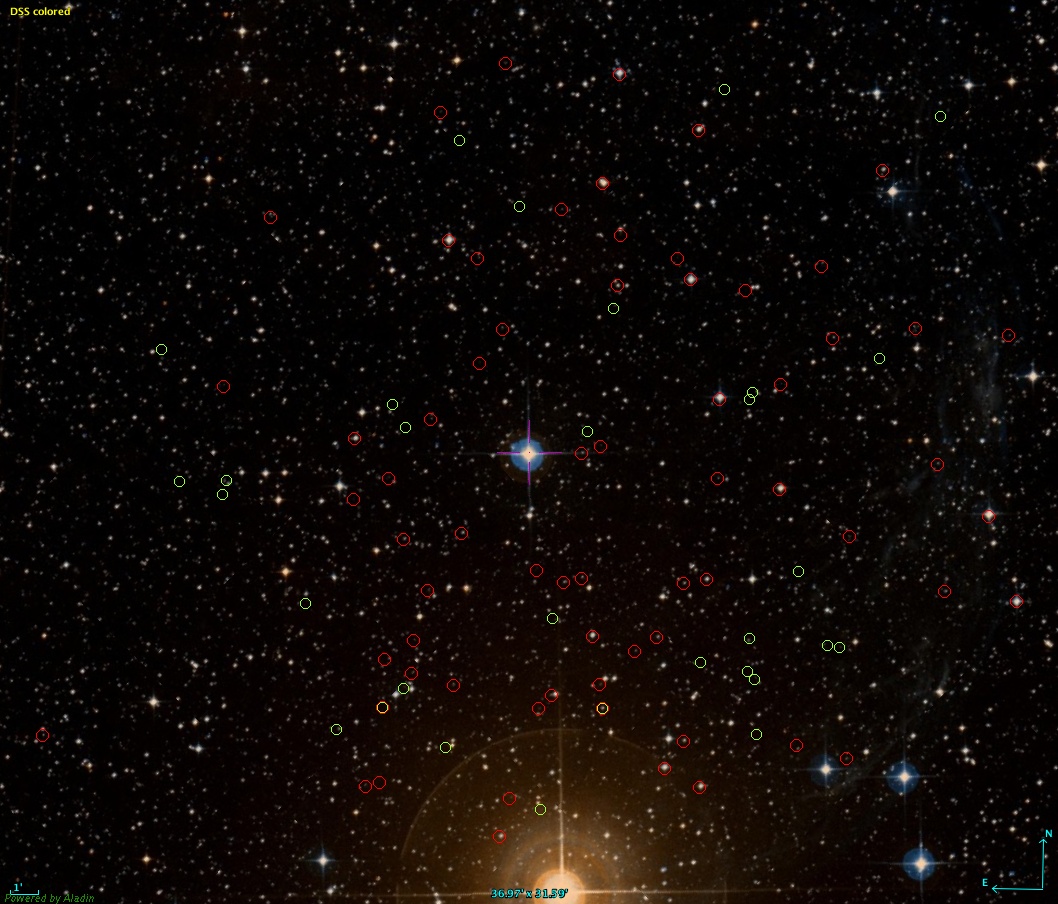In the course of the last decade, the XMM-Newton space X-ray telescope has gathered many observations of the Milky Way centred either on specifically interesting objects or aiming at making extended images of some particular regions. XMM-Newton is sensitive to X-rays slightly less energetic than those used in human radiography and as a consequence is affected by the interstellar matter in our Galaxy made of diffuse layers but also of thicker dusty and cold clouds.
The galactic X-ray landscape is made of point sources of too small extent to be spatially resolved by XMM-Newton and of a variety of diffuse extended sources. These extended sources are mostly regions of hot gas heated by the powerful stellar winds of massive stars of by a past supernova explosion.
Basically all kinds of astrophysical objects, from the most distant quasars (or active galactic nuclei) to the nearest stars may shine in X-rays. Quasars power their huge energy output from the gravitational energy release of matter falling onto a supermassive black hole. Accretion of matter teared out from a companion star onto a "dead" star, i.e. a white darf, a neutron star or a stellar black hole can also generate copious X-ray emission. In stars, such as the Sun for instance, X-rays are emitted in the upper atmosphere (the corona) by particles that are accelerated by twisting and recombining magnetic fields. Sun-like stars may be detected by XMM-Newton up to distances of the order of 3,000 light years. On the other hand, accreting sources being significantly more luminous in X-rays than stars, they may be detected up to the other edge of the Galaxy as seen from the Sun, i.e. 80,000 light years.
The very high surface object density encountered in the Milky Way may make extremely difficult the identification of the optical object really responsible for the X-ray emission. Several observational campaigns involving the largest optical telescopes have shown that in the Galaxy, about half of the X-ray sources are associated with stars similar to our Sun, while the other half consists of remote active galactic nuclei seen through the whole Galaxy. Only a few percent of the genuine Galactic sources are not Sun-like stars and consist among other possibilities of accreting "dead" stars or are due to gas heated in collisions inside the dense winds emitted by some of the most massive stars.
Because their X-rays had to travel through the entire Galaxy, over many thousands light years, absorption by dust and gas imprints a specific signature on the X-ray spectrum of active galactic nuclei. X-rays from sources located behind the Milky way typically suffer from a lack of the less energetic X-rays that are preferentially absorbed by the interstellar material. In contrast, Sun-like stars radiate much more low energy X-rays as a consequence of their nearby location and of their lower temperature X-ray spectra.
During the last 70,000 years, strong winds emitted by HR 2583 at a velocity of 2,000 km/s have generated a bubble named Sharpless 2-308. This bubble has a diameter of about 60 light years. An optical image of the Sharpless 2-308 the bubble blown by the central Wolf-Rayet star HR 2583 .
The statistical cross-matching algorithms developped in the context of ARCHES will allow us to identify many more Galactic X-ray sources than possible with traditional optical observational methods. Of particular interest are the low to medium luminosity sources that are too faint to be studied in external galaxies (such as the Wolf-Rayet shown in the example above). These large samples of well characterized Galactic X-ray sources will allow us to advance several astrophysical problems outlined below:
- Stars: Old stars tend to rotate more slowly than young ones since the stellar wind carries away angular momentum. Strong magnetic fields are generated inside the outer convecting layer through differential rotation. Hence the higher the rotation rate, the higher the magnetic field and the stronger is the X-ray luminosity. In other words, wearing "X-ray glasses" allows astronomers to immediatly see the youngest stars (typically younger than one or two billion years, i.e. still young for stellar standards). This unique property opens the possibility to study in detail how and on which time scale young stars migrate from their birth place and spread in the Galaxy.
- Accreting binaries: The theory of binary evolution predicts a number of potentially X-ray emitting stages that have so far not been seen and this casts soe doubt on their validity. ARCHES will allow us to search more efficciently for these "missing links".
- Isolated neutron stars and black holes:. The many massive stars that were born, lived and died since the birth of the Milky way should have left a large number of neutron stars and blackholes, perhaps a billion or more. The vast majority of these "dead" stars should live in isolation. According to some models, they may be detected through their faint X-ray emission.

